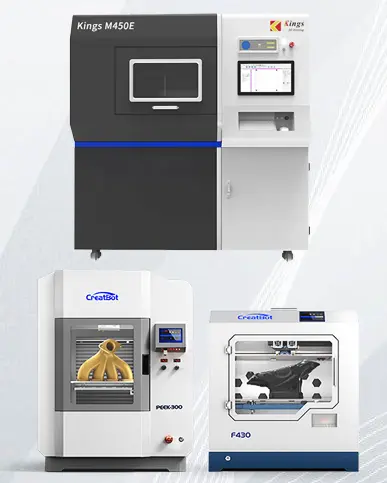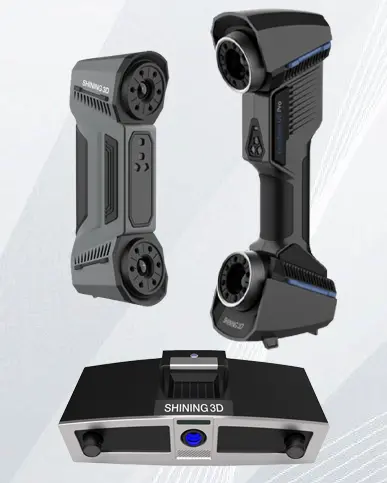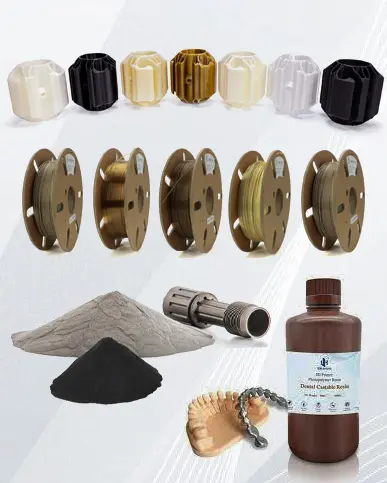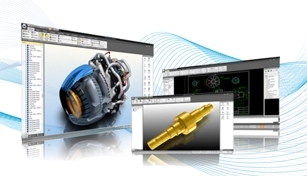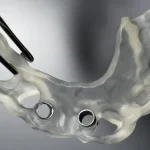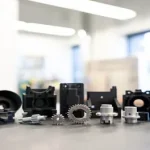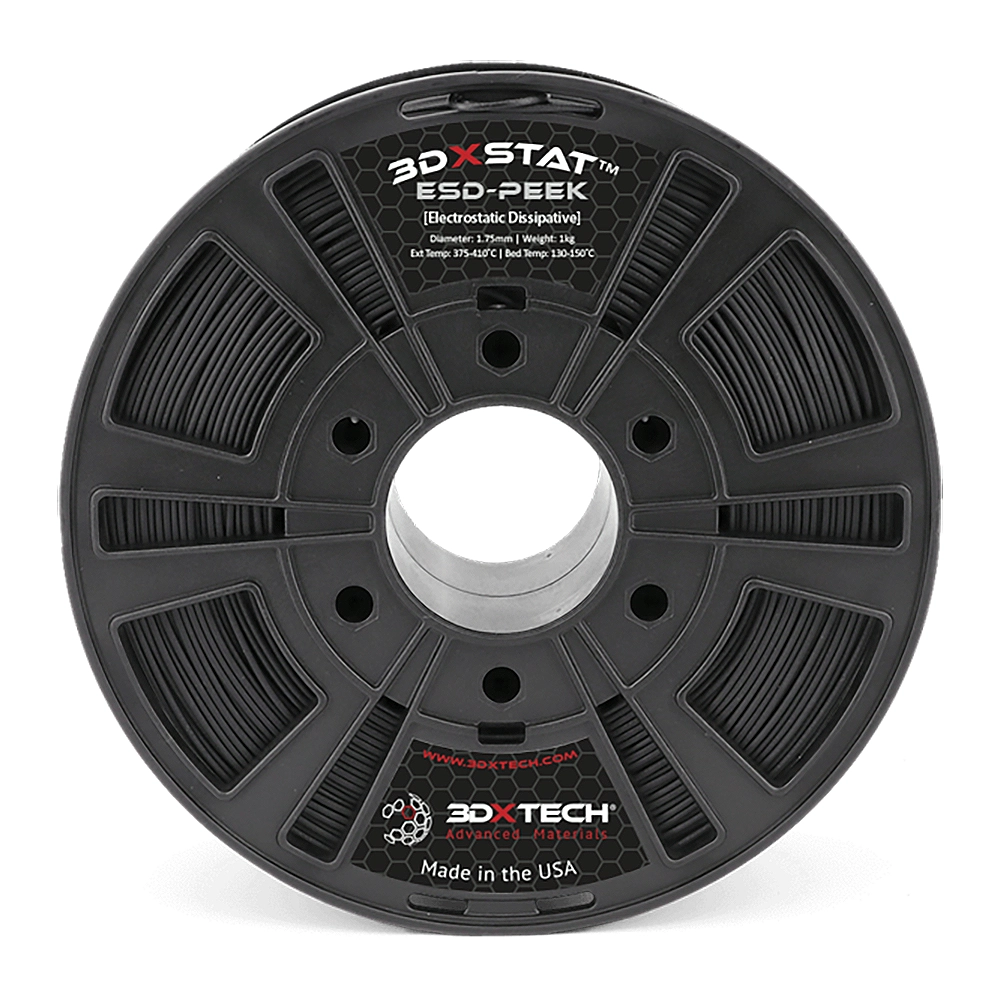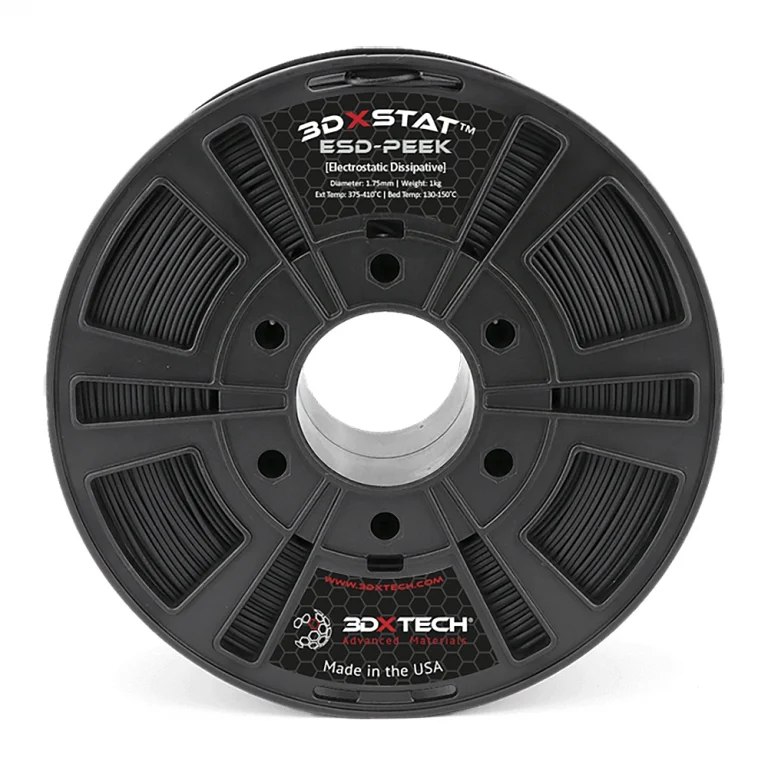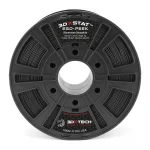Benefits of PEEK Include:
- Inherently flame resistant and self-extinguishing
- Long-term hydrolytic stability even above 250°C
- Outstanding resistance to a broad range of chemicals, including automotive fluids, fully halogenated hydrocarbons, alcohols, and aqueous solutions
- Low smoke and toxic gas emissions
- Excellent dimensional stability with low heat creep, low and uniform coefficient of thermal expansion, giving PEEK highly reproducible part-to-part dimensions
- High thermal properties with a Tg of 143°C, CUT of 240-260°C, and Tm of 343°C
Benefits of 3DXSTAT™ Include
- Consistent surface resistivity
- Improved retention of impact & elongation
- Low particulate contamination
- Minimal contribution to outgassing and ionic contamination
Typical ESD PEEK Applications Include:
- Semi-con: HDD Components, Wafer Handling, Jigs, Casings, & Connectors
- Industrial: Conveying, Metering, and Sensing Applications
- Seals, Gears, Bushings, Bearings, Pump and Compressor Components
- Industries Served: Auto, Aerospace, Defense, Semi-conductor, Oil & Gas
Target Conductivity for 3DXSTAT™ ESD PEEK:
- 10^7 to 10^9 ohm surface resistivity on 3DP sample using concentric ring test method.
- Note: Internal studies have indicated that increased extruder temperatures can achieve higher levels of conductivity. Likewise, lower extruder temperatures have resulted in lower levels of conductivity. Each printer is set-up differently, not to mention varied part geometry. Therefore, expect some trial time to understand how ESD PEEK filament works in your specific printer and application.
Surface Conductivity as a Function of Extruder Temperature:
The surface resistance of the printed ESD-safe part will vary depending on the printer’s extruder temperature. For example, if your testing indicates the part is too insulative, then increasing the extruder temperature will result in improved conductivity. Therefore, the surface resistance can be ‘dialed-in’ by adjusting the extruder temperature up or down depending on the reading you receive on your part.
Printing with 3DXSTAT™ ESD PEEK
PEEK has a melt temperature (Tm) of 343°C, therefore, you will need an all-metal extruder capable of reaching (and holding) temps upwards of 400°C or more depending on your specific printer. Every printer, slicer, and printing environment is different and you will need to tinker to find a process which works for you. One of the more difficult aspects of printing with PEEK was getting it to stick to the build plate.
Please note: ESD PEEK has a tendency to stick to metal (PEEK loves metal). Make sure to purge out your extruder completely before it cools down or you run the risk permanent clogs. Seriously, we know this first hand.

